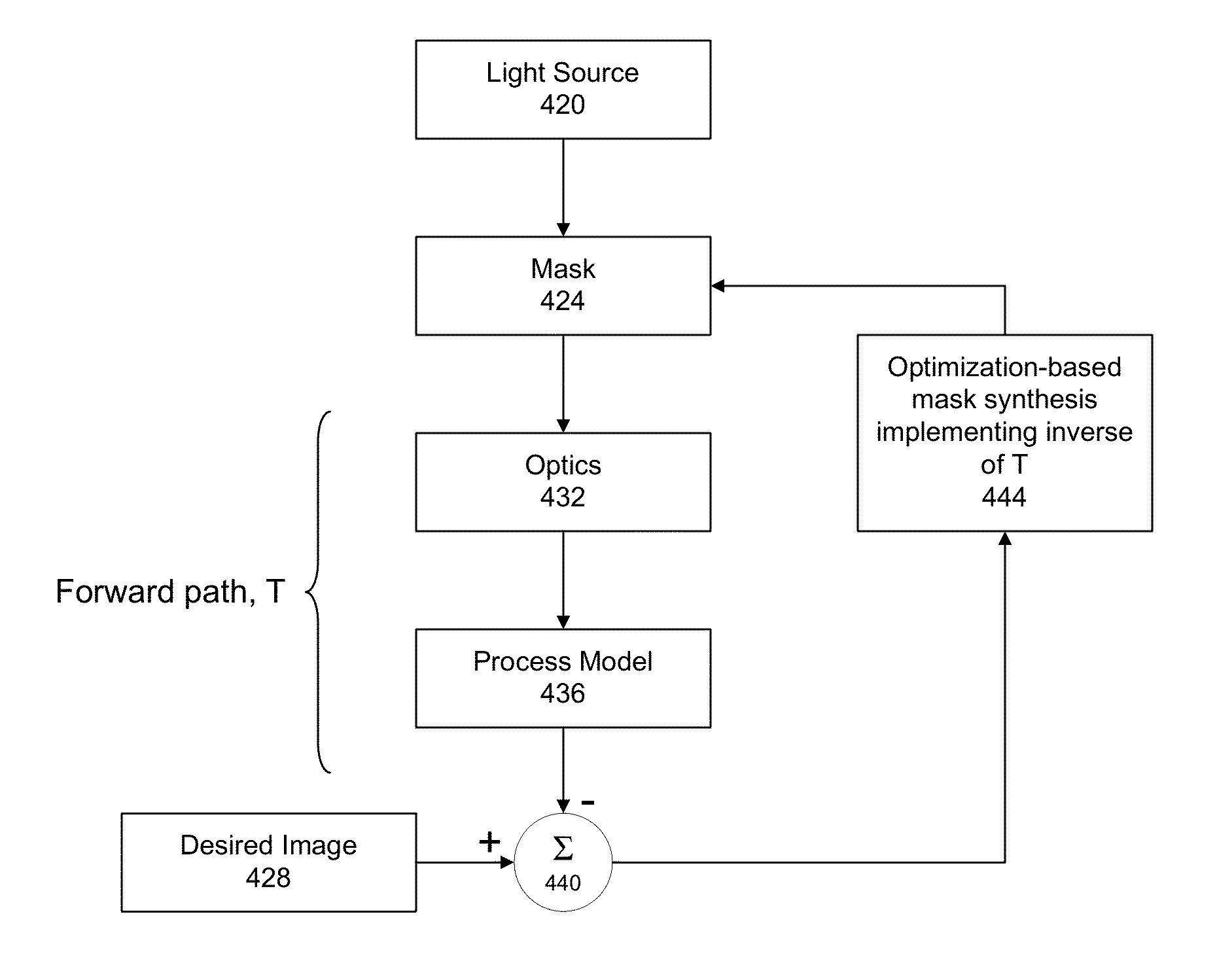Techniques of optical proximity correction using GPU
a technology of optical proximity correction and gpu, applied in the field of electronic design automation, can solve the problems of s, optical proximity correction, and modification of mask shapes for fixed source shapes, and may be very computationally intensive, and may require an even larger number of computational resources
- Summary
- Abstract
- Description
- Claims
- Application Information
AI Technical Summary
Benefits of technology
Problems solved by technology
Method used
Image
Examples
case 1
[0069]By dividing the index space, n1 or n2, into equal intervals, the hnk1 with a lower degree polynomial can be approximated. The interval in which the given n1 or n2 values lie can be determined by dividing the index by the interval length and by using a switching operation (described below). If a 3rd degree polynomial approximation is used, the calculation cost can be reduced to 4 multiplications and a switching operation.[0070]IntervalLength=totalIntervalLength / 10; / / as an example[0071]interval=n1 / IntervalLength;[0072]switch (interval)[0073][0074]hnk1=((c3*x+c2)*x+c1)*x+c0;[0075]break;[0076]case 2:[0077]hnk1=((c7*x+c6)*x+c5)*x+c4;[0078]break;[0079]. . .[0080]}
[0081]In other words, the total cost can be reduced. In the above example, the total cost can be reduced to 8×(4+1)=40 computations, which is about 5× faster than the ones employing memory lookup operations.
[0082]Section 3 Optical Proximity Correction on Hardware or Software Platforms with Graphical Processing Units
[0083]T...
PUM
 Login to View More
Login to View More Abstract
Description
Claims
Application Information
 Login to View More
Login to View More - R&D
- Intellectual Property
- Life Sciences
- Materials
- Tech Scout
- Unparalleled Data Quality
- Higher Quality Content
- 60% Fewer Hallucinations
Browse by: Latest US Patents, China's latest patents, Technical Efficacy Thesaurus, Application Domain, Technology Topic, Popular Technical Reports.
© 2025 PatSnap. All rights reserved.Legal|Privacy policy|Modern Slavery Act Transparency Statement|Sitemap|About US| Contact US: help@patsnap.com



